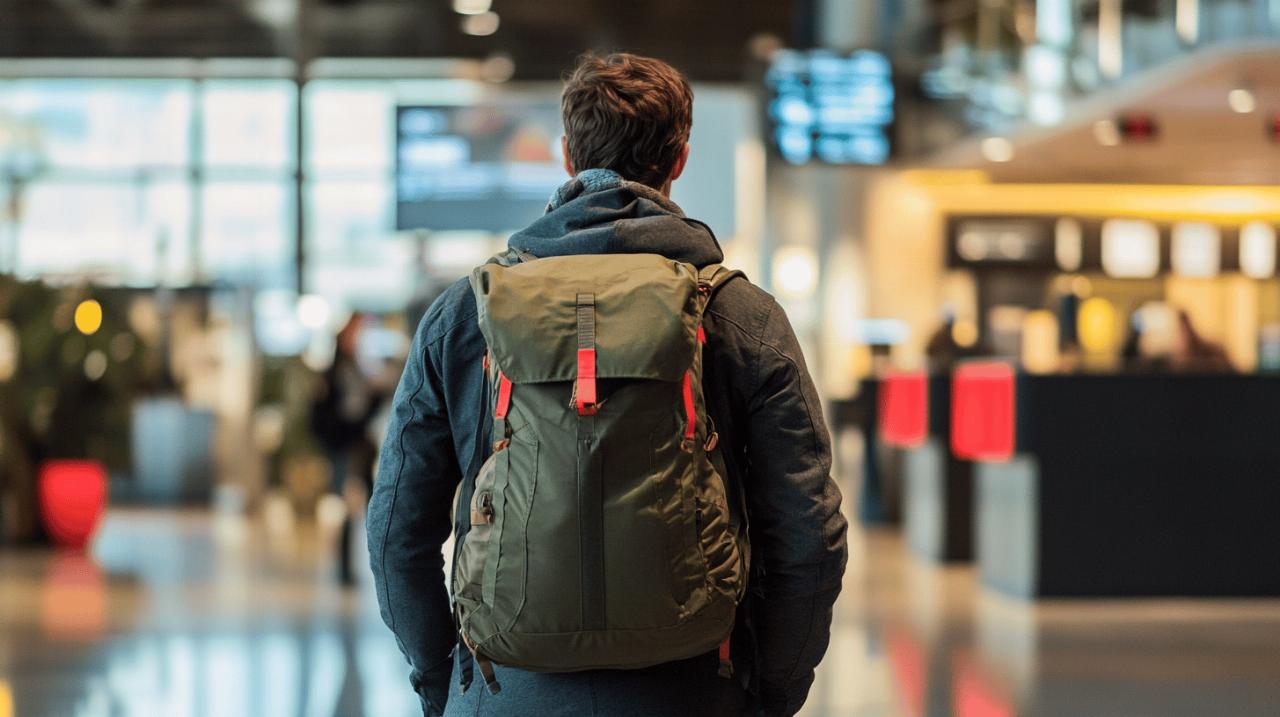Flying with a backpack can be a nerve-wracking experience, particularly when you're forced to check it into the hold rather than stowing it safely above your seat. Whether you're embarking on a long-haul journey across continents or simply heading off for a weekend break, the thought of your trusty rucksack being tossed around by baggage handlers is enough to keep any traveller awake at night. The good news is that with a bit of forward planning and some clever packing strategies, you can significantly reduce the risk of damage to your gear and ensure your belongings arrive in one piece. This guide will walk you through everything you need to know about safeguarding your backpack when it travels in the aircraft hold, from choosing the right protective cover to understanding your rights if something does go wrong.
Preparing your backpack before check-in
Before you hand over your rucksack at the check-in desk, taking a few precautionary steps can make all the difference between arriving with your gear intact or spending your holiday dealing with damaged equipment. The first and most crucial task is to ensure that all loose straps, buckles, and external attachments are properly secured. Dangling straps can easily become snagged in conveyor belts or caught on other luggage, potentially causing tears or even ripping off entirely. Many seasoned travellers recommend tucking away every strap and fastening all buckles tightly so that nothing protrudes from the main body of the bag. If your backpack has compression straps, use them to their full advantage to create a more compact and streamlined shape that is less likely to snag or be crushed under the weight of other bags.
Choosing the Right Protective Cover or Rain Sleeve
Investing in a durable protective cover is one of the smartest decisions you can make when checking a backpack into the hold. A high-quality rucksack cover not only shields your bag from dirt, moisture, and general wear and tear, but it also provides an extra layer of defence against rough handling. Some travellers swear by heavy-duty covers such as those made by Pro-Tector, which are specifically designed to withstand the rigours of air travel. These covers often feature reinforced stitching and robust materials that can absorb impacts and prevent zips and buckles from being damaged. Alternatively, some people opt for a simpler approach by wrapping their backpack in a few heavy-duty garbage bags secured with packaging tape. This method might not be the most glamorous, but it has proven effective for many globetrotters who have completed numerous flights without incident. Another option that has gained popularity is the use of airline car seat bags, which are typically made from tough nylon and can be obtained for free at many airports. These bags are designed to protect bulky items and can easily accommodate a standard backpack, offering a cost-effective way to add an extra layer of security.
Securing loose straps and external attachments
External attachments such as tents, sleeping pads, and trekking poles can be particularly vulnerable during air travel. If you have items strapped to the outside of your rucksack, consider removing them and packing them inside or in a separate checked item. For those who absolutely must attach gear externally, wrapping the entire pack in a protective layer becomes even more critical. Some experienced hikers recommend placing trekking poles inside a cardboard mailing tube, which can then be checked separately or packed within a larger duffel bag. When using a tube, it is wise to place the poles in opposing directions with foam or packing peanuts in the middle to absorb any stress if something heavy lands on top. This simple technique can prevent poles from being bent or broken during transit. Another traveller shared a clever tip about labelling any plastic wrap or protective covering with a clear message such as 'Do not use a knife to open' to prevent overzealous baggage handlers from accidentally slicing through your gear when inspecting it.
Understanding airline regulations and insurance options
Navigating the maze of airline regulations can feel like a challenge in itself, but understanding what carriers allow and restrict is essential to avoid unexpected fees or complications at the airport. Most airlines impose strict size and weight limits for both carry-on and checked luggage, and these limits can vary significantly depending on the carrier and the class of service you have booked. A typical carry-on backpack might be restricted to dimensions of around 40 by 20 by 25 centimetres, which means that larger rucksacks, particularly those over 40 litres in capacity, will almost certainly need to be checked into the hold. It is always a good idea to check your airline's specific baggage policy well in advance of your departure date so that you can plan accordingly and avoid any last-minute surprises at the gate.
What Carriers Allow and Restrict for Checked Rucksacks
When it comes to checked luggage, airlines typically impose weight limits that range from 20 to 23 kilograms for standard economy passengers, though some carriers may allow slightly more depending on your ticket type or frequent flyer status. Oversized or overweight bags often incur hefty additional fees, so it pays to weigh your backpack at home before you head to the airport. In addition to size and weight restrictions, certain items are prohibited from being packed in checked luggage for safety reasons. Sharp objects such as knives, tent pegs, and camping stoves with residual fuel must either be packed in accordance with airline guidelines or placed in a separate checked bag. Some travellers opt to pack these items in a small checked duffle or even a cardboard tube to ensure they comply with regulations while keeping their main backpack as streamlined as possible. It is also worth noting that security agencies such as the TSA in the United States have the authority to open and inspect any checked bag, so using a TSA-approved lock can provide some peace of mind while still allowing inspectors to access your luggage if necessary.
Travel Insurance Coverage for Damaged or Lost Luggage
Despite your best efforts to protect your backpack, accidents can and do happen. This is where travel insurance becomes invaluable. A comprehensive travel insurance policy should cover you for damaged, delayed, or lost luggage, providing financial compensation to replace essential items or repair damaged gear. When purchasing insurance, it is important to read the fine print and understand exactly what is covered and what is not. Some policies have exclusions for certain types of equipment or may only cover items up to a specified value, so it is wise to declare any high-value gear when taking out your policy. In addition to private insurance, passengers travelling within or to the European Union are protected by Regulation 261 of 2004, which grants rights to compensation in the event of significant flight delays, cancellations, or denied boarding due to overbooking. If your flight is delayed by more than three hours, you may be entitled to compensation ranging from approximately £213 to £513, depending on the distance of your journey. Airlines are generally not required to pay compensation if the delay was caused by extraordinary circumstances such as severe weather or security threats, but they are obligated to provide assistance in the form of meals, refreshments, and accommodation if the delay extends overnight.
Packing strategies to minimise damage risks
 How you pack your backpack can have a significant impact on its chances of surviving the journey unscathed. The key is to distribute weight evenly and to ensure that fragile items are well cushioned and protected from any knocks or jolts they might encounter in the hold. Start by placing the heaviest items at the bottom of your rucksack, which helps to create a stable base and prevents the bag from toppling over. Lighter and more delicate items should be packed towards the top, surrounded by clothing or other soft materials that can act as a buffer. If you are carrying electronics, toiletries, or other valuables, consider keeping them in your hand luggage whenever possible to minimise the risk of loss or damage.
How you pack your backpack can have a significant impact on its chances of surviving the journey unscathed. The key is to distribute weight evenly and to ensure that fragile items are well cushioned and protected from any knocks or jolts they might encounter in the hold. Start by placing the heaviest items at the bottom of your rucksack, which helps to create a stable base and prevents the bag from toppling over. Lighter and more delicate items should be packed towards the top, surrounded by clothing or other soft materials that can act as a buffer. If you are carrying electronics, toiletries, or other valuables, consider keeping them in your hand luggage whenever possible to minimise the risk of loss or damage.
Distributing weight and protecting fragile items inside
When packing fragile items such as cameras, tablets, or souvenirs, it is essential to wrap them individually in soft clothing or bubble wrap to provide adequate cushioning. Placing these items in the centre of your backpack, surrounded by layers of clothing, can help to absorb shocks and prevent breakages. Avoid packing fragile items near the edges or corners of your rucksack, as these areas are more likely to be subjected to impacts during handling. Another useful tip is to fill any empty spaces within your bag with soft items such as socks, t-shirts, or a lightweight fleece, which not only helps to protect your gear but also prevents items from shifting around during transit. Some travellers also recommend using a nylon pack liner with a roll-top closure, which can be secured with a travel lock to add an extra layer of security and keep everything inside dry and organised.
Using internal compartments and packing cubes effectively
Modern backpacks often come equipped with multiple internal compartments and pockets, which can be incredibly useful for keeping your belongings organised and easy to access. Packing cubes are another excellent tool for maximising space and ensuring that your gear stays in place during the journey. By grouping similar items together in individual cubes, you can quickly locate what you need without having to rummage through your entire bag. This method also helps to distribute weight more evenly and can make repacking at your destination a much more straightforward process. When using packing cubes, try to compress them as much as possible to create a more compact load, which in turn reduces the likelihood of your backpack being squashed or damaged by heavier luggage stacked on top of it in the hold.
What to Do If Your Backpack Gets Damaged in the Hold
Even with all the precautions in the world, there is always a chance that your backpack might suffer some damage during its time in the hold. Knowing what steps to take if this happens can make the process of seeking compensation or repairs much smoother and less stressful. The most important thing is to act quickly and to document everything as thoroughly as possible from the moment you realise there is a problem.
Reporting Damage to the Airline Immediately Upon Arrival
As soon as you collect your backpack from the baggage carousel and notice any damage, you should report it to the airline's baggage services desk before leaving the airport. Most airlines require passengers to report damage within a specific timeframe, often within a few hours of arrival, so it is crucial not to delay. When reporting the issue, be as detailed as possible about the nature and extent of the damage, and ask for a written report or reference number that you can use when following up on your claim. Take photographs of the damage from multiple angles, as visual evidence will be invaluable when making your case. If possible, also take photos of the protective covering or any other measures you took to safeguard your bag, as this can help to demonstrate that the damage was not caused by negligence on your part.
Filing Claims and Documenting Evidence for Compensation
Once you have reported the damage, the next step is to file a formal claim with the airline. This process typically involves completing a claim form and submitting it along with any supporting documentation such as photographs, receipts for the backpack and its contents, and the written report you received at the airport. Keep copies of everything you submit, as you may need to refer back to these documents if your claim is delayed or disputed. In some cases, the airline may offer to repair the damage or to provide a voucher towards a replacement, while in other situations you may be entitled to monetary compensation. The amount you can claim is usually limited by international conventions such as the Montreal Convention, which sets a maximum liability for lost or damaged luggage. If you have travel insurance, you should also file a claim with your insurer, as this may provide additional coverage beyond what the airline is willing to pay. Organisations such as AirHelp can assist passengers in navigating the claims process and advocating for their rights, particularly in cases where airlines are reluctant to offer fair compensation. By staying persistent and keeping thorough records, you stand a much better chance of receiving the reimbursement you deserve and getting back on the road with your gear in good condition.



